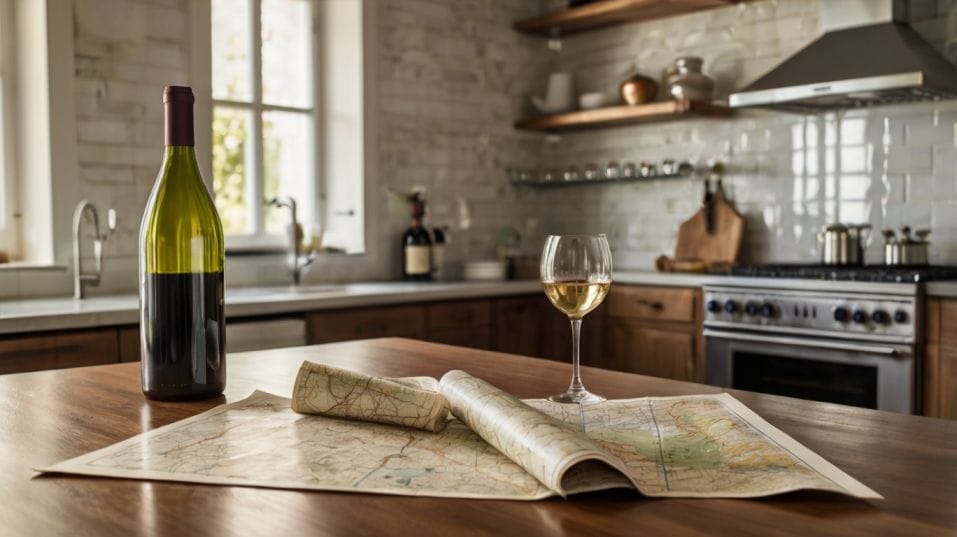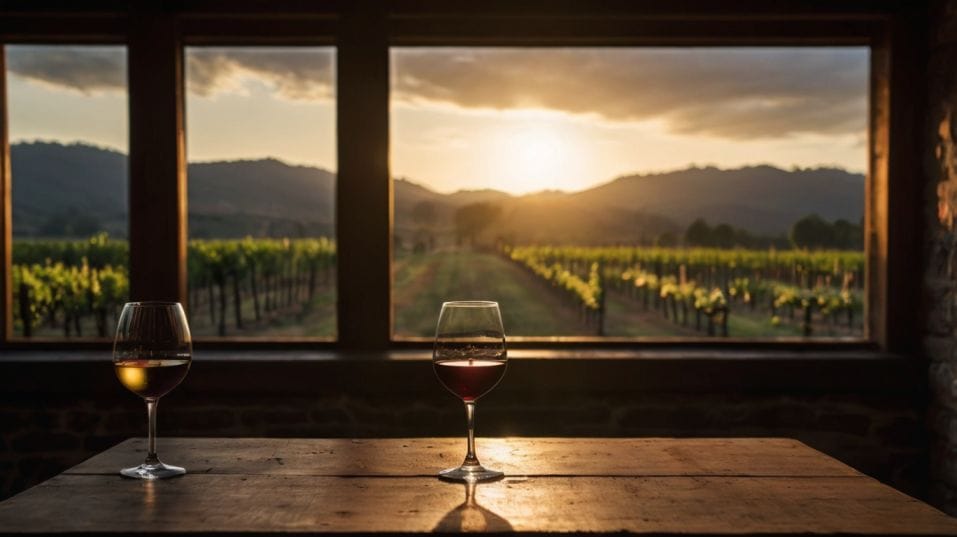Understanding Wine Regions Without Memorizing Them
Forget flashcards. Learn wine regions by tasting patterns, not memorizing maps—perfect for wine-curious drinkers ready to level up.

Ever wonder why the same grape can taste wildly different from one bottle to the next? You don’t need to memorize maps to figure it out.
The secret to understanding wine regions isn’t cramming facts—it’s learning to taste how place shapes flavor.
Whether you’re just getting serious about wine or simply want to feel more confident picking a bottle, start with your senses. Wine isn’t about perfection. It’s about fluency.
Place Isn’t Just Geography—It’s Personality
When people talk about terroir, they’re talking about something bigger than dirt. Terroir is the personality of a place—climate, soil, altitude, tradition, grape variety, and human hands all rolled into one.
And it shows up in your glass every time you pour. But instead of trying to memorize every detail about every wine region, learn to recognize the effects of place.
Think of wine as a spectrum. Cool climates tend to produce wines that are lighter in body, higher in acidity, and often more aromatic. Warmer climates usually yield fuller-bodied wines with softer structure, riper fruit, and a richer feel.
Let’s say you’re drinking a Chardonnay. From Chablis, it might taste crisp, almost austere, with lemon, green apple, and flinty minerality.
The same grape from Napa Valley could be rounder, creamier, with ripe tropical fruit and hints of vanilla from oak aging. Same variety, different places—completely different expression.
You don’t need to remember the slope of Montagne de Reims or the rainfall stats of Barossa. Instead, train your palate to ask: Is this wine bright or plush?
Lean or broad? Earthy or juicy? The answers start connecting places to flavor without rote memorization.

Wine Regions Reflect Decisions, Not Just Conditions
Every wine is a combination of what nature provides and what the winemaker decides to do with it. That’s why wine regions develop distinct styles over time—not just because of climate, but because of tradition, culture, and philosophy.
Old World vs. New World Styles
In many Old World regions—places like Bordeaux, Rioja, or Barolo—the winemaking approach has been shaped over centuries.
Grapes are grown to express a specific place, and winemakers often prioritize structure, longevity, and food-pairing harmony.
These wines tend to be more restrained when young, with tannin, acidity, and a sense of structure leading the conversation.
In contrast, many New World producers—think California, Chile, Australia, or South Africa—have fewer historical restrictions and often emphasize bold fruit, texture, and immediacy.
There’s more room to experiment, which leads to a wide range of styles even within one region. You don’t need to catalog every regional rule.
But if you know that Rioja typically involves oak aging and blends based on Tempranillo, or that Oregon Pinot Noir often aims for elegance over weight, you’ve already got a functional understanding of those places.
It’s not about knowing the DOC law—it’s about knowing what kinds of wines those choices create.
Labels Teach, but You Have to Interpret Them
Wine regions often show up right on the label—but they’re only useful if you know what to expect from them.
A name like “Marlborough” or “Mosel” isn’t just a location; it’s a style signal. And once you start matching those names with flavor memories, they stop being trivia and start becoming tools.
Region Names as Style Signals
Take “Chianti Classico.” It tells you the wine is from the heartland of Tuscany. But more importantly, it tells you to expect bright red fruit, acidity, some herbal notes, and food-friendly structure.
You don’t need to memorize the commune boundaries of Castellina or Greve—you just need to recognize how that region tends to taste.
The more you taste, the easier these labels become to decode. For example:
- “Barossa” often signals bold, spicy Shiraz with richness and power.
- “Loire Valley” could suggest crisp Sauvignon Blanc or elegant Cabernet Franc.
- “Willamette Valley” is usually your cue for cool-climate Pinot Noir with finesse.
Labels also offer clues about the winemaking process. Terms like “Reserva,” “Sur Lie,” or “Unfiltered” hint at aging, texture, or style decisions. Don’t gloss over them—ask how they shape what you’re tasting.
Tasting Builds Muscle Memory
The fastest, most effective way to internalize wine regions is to taste them side by side. That’s how professionals train—comparing the same grape from different regions, or the same region across vintages, to develop their sensory memory.
Learning by Contrast
You don’t need a formal blind tasting setup. All you need is a couple of wines and an open mind. Pour a Cabernet Sauvignon from Bordeaux and one from California.
Notice how one leans savory and structured while the other might feel juicier and more opulent. That contrast teaches more than any textbook.
Better still, try the same grape grown in dramatically different places:
- Riesling from Germany vs. Australia
- Syrah from the Northern Rhône vs. South Africa
- Chardonnay from Burgundy vs. Sonoma Coast
When you taste like this regularly, you start to develop instincts. You begin to recognize patterns—not just in grape expression, but in regional style. Over time, you won’t just guess where a wine is from. You’ll feel it.
Use Context to Build Confidence
You don’t need to master every wine region to shop or order well. You just need a few reliable reference points and the confidence to ask good questions. When you see a wine you don’t recognize, think about what you do know:
- Is it a grape you enjoy in another region?
- Is the climate there similar to places you’re familiar with?
- Does the label mention oak, lees aging, or other style indicators?
If you're at a restaurant, let the sommelier know what you like. Not just "I like red wine," but "I usually enjoy earthy Pinot Noir or reds with good acidity and not too much oak."
That kind of context is more useful than throwing out a region name just to sound knowledgeable. Remember: wine pros aren’t judging what you know. They’re helping you enjoy what you drink.
Final Thoughts
You don’t need to memorize maps, appellations, or historical facts to understand wine regions. You need to taste, notice, and connect. Regions matter because they shape style—and when you learn to feel those styles, everything starts to click.
So pick up a bottle from a place you’ve never tried. Taste it slowly. See what it tells you. Maybe even taste it alongside something familiar. With every new region you explore, your wine intuition grows—and with it, your confidence.
Let this be the start of your real wine education—not one built on memorization, but one shaped by experience, flavor, and genuine enjoyment. Try something new tonight. Your palate is your best teacher.




